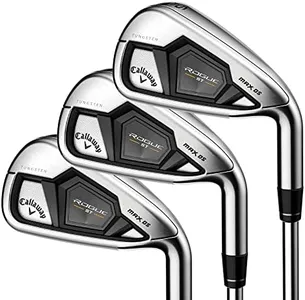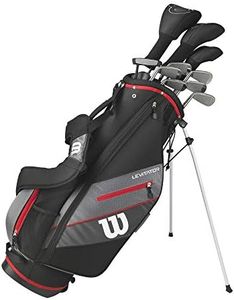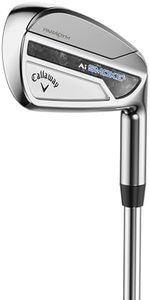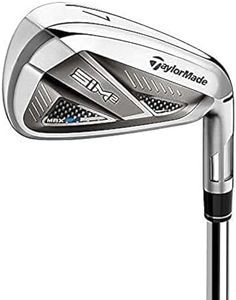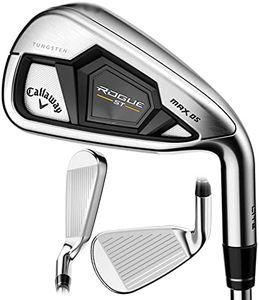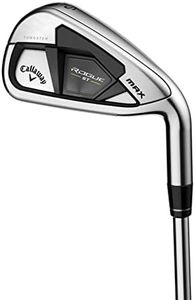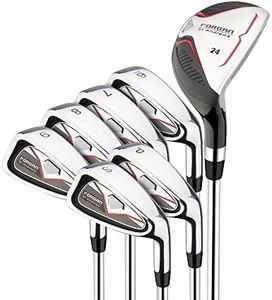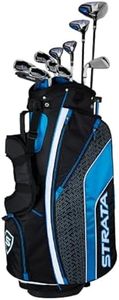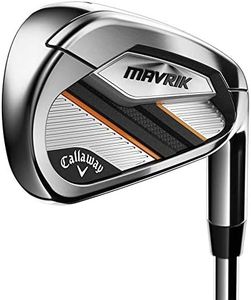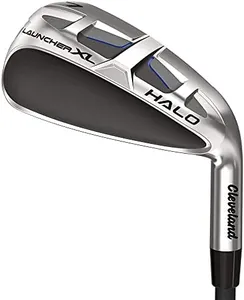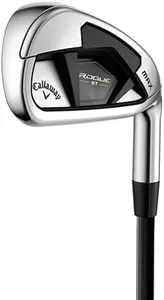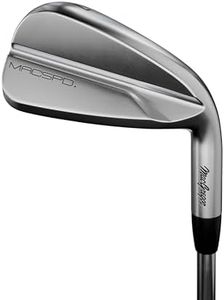We Use CookiesWe use cookies to enhance the security, performance,
functionality and for analytical and promotional activities. By continuing to browse this site you
are agreeing to our privacy policy
10 Best Mens Golf Irons
From leading brands and best sellers available on the web.Buying Guide for the Best Mens Golf Irons
Choosing the right men's golf irons can make a big difference in your game, whether you're a beginner or have been playing for years. The right irons help you get the distance, control, and feel you need on the course, keeping your experience enjoyable and improving your performance. To make the best choice, it’s important to understand the key features and how each one can impact your game, as well as how your skill level and playing style influence what suits you best.Clubhead DesignThe design of the clubhead, which includes size and shape, impacts forgiveness and ball trajectory. There are generally three types: blades, cavity backs, and game improvement irons. Blades are slim and favored by skilled players who want control and feel, but they’re less forgiving on off-center hits. Cavity back irons have a hollowed-out back, offering more forgiveness, making them a great option for most golfers. Game improvement irons are larger with more weight around the perimeter, designed for players seeking ease of use and maximum forgiveness. If you’re new or prioritizing easier play and consistency, go for cavity back or game improvement styles; more skilled or precise players may appreciate blades.
Shaft MaterialThe shaft, which connects the grip to the clubhead, is usually made from steel or graphite. Steel shafts are heavier and provide better feedback and control, which can help stronger or more skilled golfers fine-tune their swing. Graphite shafts are lighter, which allows players with slower swing speeds to generate more power and distance while reducing strain. For stronger players or those who prefer more feedback, steel is often better. If you want lighter weight and easier swings, graphite might be the right choice.
Shaft FlexShaft flex refers to how much the shaft bends during your swing. Common options include extra stiff, stiff, regular, senior, and ladies’ flex. Players who swing faster benefit from stiffer shafts, while slower swing speeds work better with flexible shafts, offering more distance and accuracy. Choosing the right flex depends on your swing speed and strength—a slower swing means a more flexible shaft is typically best, while fast, powerful swings match well with stiffer shafts.
Set CompositionSet composition means which irons are included in the set, ranging from long irons (like 3- and 4-iron), mid-irons, to short irons (such as 8- and 9-iron, and pitching wedge). Long irons are harder to hit but go further, so some sets now replace them with hybrid clubs for easier launching. When deciding, consider your confidence with hitting irons versus hybrids, and think about which clubs you actually use most during a round.
ForgivenessForgiveness refers to how well an iron performs on off-center hits, making it easier for players who don’t always hit the perfect shot. You’ll see this described as the club’s ability to reduce side spin, keep distance, and maintain accuracy even with less-than-perfect swings. Beginners and average players should prioritize high-forgiveness irons, while experienced golfers who consistently hit well can use less forgiving irons for better feel and playability.
Launch and LoftLaunch and loft together determine how high and far the ball will travel. Higher lofted clubs send the ball higher but with less distance, while lower lofts yield lower flight and more distance. Your skill level, swing speed, and typical course conditions should guide your choice—if you have trouble getting the ball airborne, look for irons designed for higher launch.
Feel and FeedbackFeel and feedback describe how much information the club gives you about your shot. Some irons are designed to let you feel every impact, good or bad, which can help advanced players make minute adjustments. Others dampen vibration to make the game more comfortable, which can be preferable for those learning or seeking a smoother experience. If you like knowing exactly how you’ve struck the ball, prioritize irons known for great feel, while those seeking comfort should opt for softer, dampened irons.

